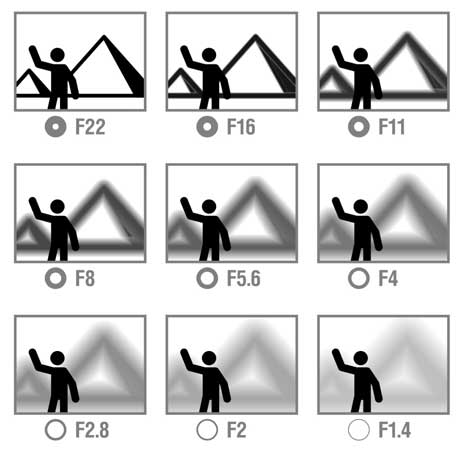Hollywood Lighting Partners would like to share this basic camera knowledge with you. Above is a great chart showing the viewer the relationship of lens and distance when it comes to depth of field and exposure.
As you can see the higher the number F-stop, the deeper the depth of field focus and the smaller the lens hole. This is easiest to get everything in focus but requires lighting or plenty of daylight. When the lens is at the highest numbered F-stop it is called ‘closed down’. So a cameraman could tell the director who is asking for a darker picture at the beach, “I’m closed down all the way.” In this case it may be that you need a ND 3 filter at the beach to knock the light down 1 stop further to maybe F32 and/or change exposure ASA/ISO setting.
As the f-stop number comes lower so does the depth of field focus and the lens hole gets wider. This might be needed for exposure in various lighting situations or for storytelling and viewer attention aspects.
When your lens is ‘wide open’ the f-stop number is as low as you can go. This lets the most light in the lens while shooting in the darkest of situations but is a nightmare for the focus puller who might be trying to follow a moving subject. As you dig for exposure in dark situations, changing the ASA/ISO setting may help, but also adds grain and can wash out detail to your picture.




